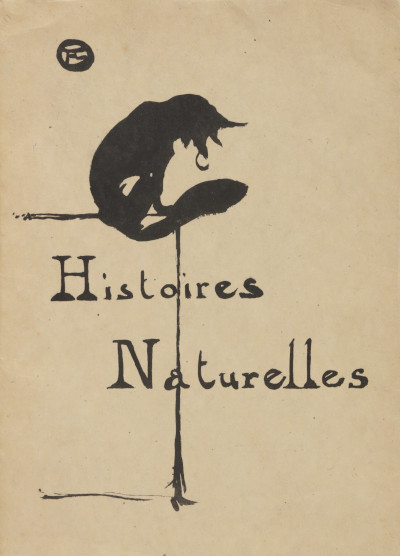Histoires Naturelles was a book which featured transfer lithographs by Henri de Toulouse-Lautrec alongside text by Jules Renard. Several copies of the book exist today and one was recently valued at Sotheby's at $10,000-$20,000, though it went unsold on auction day.
The publication focuses on specific animals, with a page assigned to Toulouse-Lautrec's illustration, with content then following afterwards. In total, the artist would add 23 artworks into the book himself, with highlights including pictures of a chicken and a swan. The book was published in 1899 and each one was numbered so according to a limited edition of 100. This type of commission would have appealed to the artist, and he also regularly produced advertising posters for novels from other writers. He enjoyed the fusion of literature and art together and this combination can be found all the way back to the Renaissance, with artists such as Sandro Botticelli who would create drawings to sit alongside famous poetry. A more recent example were the majestic illustrations by William Blake in the UK, but many other notable examples exist from other European nations.
Histoires Naturelles reminds us of the illustative qualities of Henri de Toulouse-Lautrec. He impressed an an illustrator, print maker, lithographer and painter, and all of his work across these mediums was closely linked, stylistically. He worked with pencil for his simplest of creations, and even his ambitious oil paintings would probably have commenced in much the same manner, slowly adding more detail in oils after first laying out the composition as if drawing. His study sketches were also normally the first part of each commission, particularly where the challenging genre of figurative art was involved. His sketchbooks feature hundreds of quick sketches of different individuals as a means to continuing to development his portrait techniques. Histoires Naturelles was a step beyond that, switching to the animal world, with all of the uniqueness that that brings.
Many artist have achieved success by depicting the animal world, and in this example we see how Toulouse-Lautrec addressed this challenging but rewarding genre. He studied horses as a child, regularly sketching the animals around his estate and so would have learnt much from that several decades before putting together these book illustrations. He appreciated being able to work with such charming subjects, and they were also easily accessible in and around the family home. Perhaps for Histoires Naturelles he may have looked through books of these various creatures, rather than attempting to study each of them in person though he still managed to impart flair as per his own unique style.




